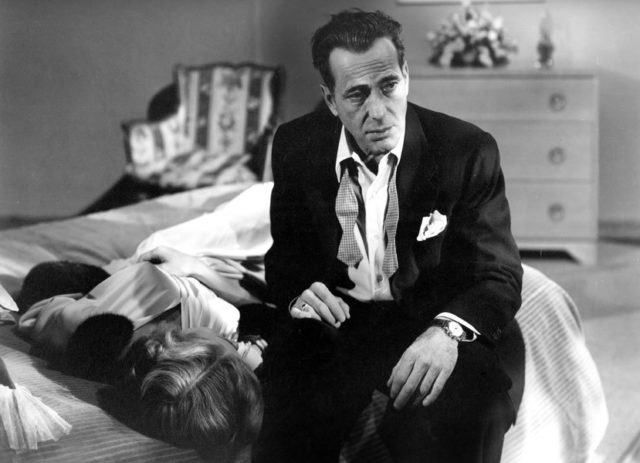
What good does it, writing about classic films?
If it’s covering an undiscovered gem or a movie never properly released, that’s one thing. But to cover a classic, a movie that has withstood the baptism of time, has been written about extensively and been determined by the larger public to be of merit and value, what more can be added?
Quite simply: the present.
Take last week’s column about Night of the Hunter. No doubt, many readers had already seen the movie, if not heard about it in the context as “one of the greats.” But how many had seen the film recently? And how many looked deep into Robert Mitchum’s sleepy eyes and saw a wolf in sheep’s clothing; the type that populate the front pages of today’s newspapers and pop up time and time again on news broadcasts?
These movies never get old. They may fall out of step with the current political and cultural climate, but they will never become dated. Baked deep within their images are timeless secrets and observations. Be it the endless debate on the meaning of 2001: A Space Odyssey or the parade of contemporary figures that comes to mind every time we watch the rise and fall of the millionaire-cum-politician in Citizen Kane.
Take 1950’s In a Lonely Place; Humphrey Bogart, in his best role, plays an alcoholic and aging screenwriter trying to adapt a pop novel for the screen. His neighbor, played by Gloria Grahame in her best role, is smitten with the brooding writer, but there’s a catch: a hatcheck girl has been murdered and all signs point to Bogie. He denies it, but he can’t deny his animalistic side, which comes on strong anytime he’s provoked or drunk. But he’s Bogie, and that dangerous edge is part of his allure (his image is still the image of the cool male). Boys will be boys, many characters reassure Grahame; just make sure to stand aside when he goes into one of his fits.
Sound familiar? For many, toxic masculinity and false assurance is part of everyday life. So much so, we wonder why so little has changed in the past 68 years since In A Lonely Place’s release. Though the movie reflects the era in which it was made, one that celebrates the temperamental male artist at all cost, watching the film produces a much different feeling. The camera is on Grahame’s side; weary and frightened of Bogie. Grahame would be too, if only she could watch.
This is when it clicks and the old cliché comes to mind: history may not repeat itself but it does rhyme.
To better understand our world, we are going to need the classics. We must return to these works, not simply because they depict the world, but because they have had a hand in shaping it. They are evolving artifacts, living road maps that show us how we got here.
On the Bill: In a Lonely Place. 3:30 p.m. Sunday, May 20, Boedecker Theater at the Dairy Arts Center, 2590 Walnut St., Boulder.














